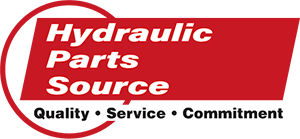Finding & Fixing Internal Hydraulic Leaks
When you think of a hydraulic oil leak, you might picture a dripping hose fitting or valve, and a puddle of fluid resting on the floor.
In some cases, however, less obvious leaks might be making your entire system less efficient. In addition, these hard-to-detect internal leaks can damage your fluid power system if left unresolved.
What Causes Internal Hydraulic Fluid Leaks?
There are a number of factors that cause internal leaks, including:- Worn component surfaces
- Worn and/or damaged seals
- Badly designed systems
- Manufacturing or rebuild mistakes
- Using the wrong parts for the job
Component surfaces begin to wear away and spaces emerge where fluids can leak inside the system.
How Damaging Are Internal Leaks?
Leaking hydraulic systems suffer from low performance and efficiency, and the problem can become worse over time slowly or quickly depending on the cause of the leak.When internal “clearances” – the space between two parts in a system – expands between a valve body and the spool on a spool valve, for instance, the system can become unstable, resulting in control issues and bad efficiency caused by energy loss.
Hydraulic pumps and motors can be a source of internal leakage and are often where major leakage problems occur. Space between components allows fluid to leak within the system and can create slippage, which makes the fluid power system less efficient.
Finding the Source of the Hydraulic Leak
When you suspect an internal leak, it can be hard to troubleshoot the cause and pin down the exact source if its not a problem you’ve faced before.A good first step is to install flow meters throughout the hydraulic system. Flow meters help detect the leak location.
Next, perform a bench test. Bench tests will often reveal leaks around hydraulic cylinders and control valves.
Ultrasonic measurements are also key to detecting internal leaks, as they provide a feedback window into the system’s internal workings.
More Ways to Improve Leak Detection
Keeping good records and close surveillance to monitor leakage within hydraulic systems is a good way to detect long-term trends and stay ahead of damaging internal leaks.Matching this information with a maintenance plan aimed at catching leaks early can help keep your system efficient and reduce the need for repairs.
Fixing Found Leaks
As mentioned previously, component wear and tear is the most common cause of an internal leak.Replacing the worn part(s) will often fix a leak caused by the excessive space / clearance between two parts that should be sealed tight. On occasion, however, a major part may need repaired, remanufactured, or replaced.
If any parts in question show signs of premature wear, it’s worth investigating to find if that wear is the cause of a leak following the steps outlined above. In some cases it may be found that an additional source is at play – perhaps wrong hydraulic fluid, contamination by abrasive particles, or higher-than-recommended operating temperatures are the underlying culprit.
